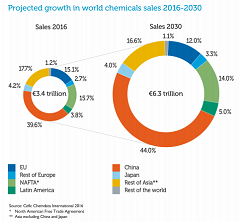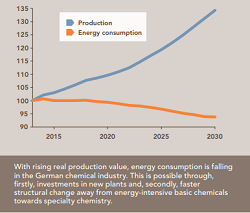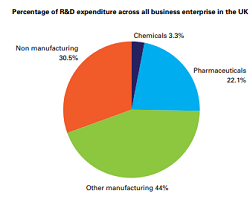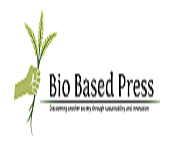Theme: Accentuate Innovations and Emerging Novel Research in Organic and Inorganic chemistry
Organic Chemistry 2019
- About Organic Chemistry 2019
- Market Analysis, Growth and Opportunities
- Scientific Sessions/Tracks of Organic Chemistry 2019
6th International Conference on Organic and Inorganic Chemistry will be held in Amsterdam, Netherlands during August 08-09, 2019. We are glad to welcome all the interdisciplinary group of world-recognized experts and young researchers from organic and inorganic chemistry, providing an excellent platform to address, network and discuss the fundamental aspects of Chemistry with the leaders.
Organic Chemistry 2019 with the theme “Accentuate Innovations and Emerging Novel Research in Organic and Inorganic chemistry” will be featuring the scientific and technical sessions, plenary lectures, oral and poster presentations, keynote speakers, exhibition, as well as exceptional networking opportunities.
Organic Chemistry 2019 will be focusing on different aspects of Organic Chemistry, Inorganic Chemistry Polymer chemistry, Medicinal chemistry, Advances in organic chemistry, Electrochemistry, Green chemistry, Food chemistry, Physical Chemistry, new improvements in the field of Organic Chemistry, Inorganic chemistry of materials and Bio-Inorganic Catalysis, Applications of organic chemistry, Organic Photochemistry, Coordination Chemistry and Organometallic chemistry, Chemo-selectivity, Organic chemistry of life, Organic items and heterocyclic chemistry, new synthetic ways and advances in catalysis.
Who can attend?
Prominent pioneers
Scientists
Chemistry Professors
Partner and Assistant Professors of Chemistry
Post-Doctoral and Researchers in Chemistry
Head of Chemistry Departments
Post Graduates and Graduates in Chemistry
Research center Chemists
Inorganic chemists
Substance Scientists working at Materials
Specialists in the advancement of Organometallic chemistry
Chemistry Associations
Chemical Industries
Why to attend?
- Meet and network with the key people in the industry.
- Learn how the scientists are developing solutions to common problems.
- Gather important information on technical developments and equipment.
- Bring yourself up-to-date on current developments and future trends in chemistry research.
- Access how industry strategies are evolving to meet today’s challenges.
- Learn how to design for efficiency and optimize your development objectives.
The global chemical industry has grown by 7 percent annually, reaching €2.4 trillion in 2010. Most of the growth in the past 25 years has been driven by Asia, which now owns almost half of global chemical sales. The global chemical markets are expected to grow an average 3 percent in the next 20years. Asian players are positioned to own two-thirds of the market by 2030.
Organic chemical industry is anticipated to hold 51% of the total chemical industry market globally by 2030. With Asia Pacific, Europe, North America and Latin America being the leading markets for organic chemicals, the industry has witnessed approx. 10% growth in the last 5 years. Expanding industry applications, investment favouring industry policies are driving organic chemicals market till 2019.Extensive primary research is being conducted among leading companies such as BASF, Dow Chemicals, SABIC, Sinopec, and DuPont Chemicals and key opinion leaders from organic chemical industry.
Global Organic Acids Market was valued at $16,837 million in 2016, and is expected to reach $29,197 million by 2023, registering a CAGR of 8.3% from 2017 to 2023. Organic acids are weak acids that do not completely dissociate in water when compared to mineral acids.
Key players such as BASF SE, Cargill, Inc., The Dow Chemical Company, Eastman Chemical Company, Myriant Corporation, Celanese Corporation, Archer Daniels Midland Company, Henan Jindan Lactic Acid Technology Co. Ltd., Tate & Lyle Plc., and E. I. Du Pont De Nemours and Company have largely invested in R&D activities to develop advanced products to cater to the requirements of the consumers.
United States Chemical industry:
The chemical industry is one of the largest and most important industries worldwide. The United States is the largest national producer of chemical products globally. Including the pharmaceutical sector, its chemical output value was more than 767 billion U.S. dollars in 2016.
2018 ranking of leading United States chemical companies based on revenue (in billion U.S. dollars)
Source: Statista 2018
Projection of annual production growth in the United States chemical industry from 2018 to 2023
China Chemical Market:
The Chinese chemical market generated total revenues of RMB11.2 trillion in 2016 growing at a 9.4 percent CAGR from 2012 to 2016 in value. The commodity chemical market grew at a 9.3 percent CAGR, specialty chemical market at a 7.1 percent CAGR. Growth is expected to slow to an expected 5.4 percent CAGR for the total Chinese chemical market to 2020 in value terms. By 2020, the Chinese chemical market is expected to reach RMB13.8 trillion.
Germany Chemical Industry:
The German Chemical Industry in 2030, predicts growth of 1.5% a year until 2030 for the German chemical industry. With a 2016 turnover of €184.7 billion, chemicals and pharmaceuticals are the third-largest industry in Germany, behind only automotive and machinery and equipment. The German Chemical Industry in 2030, predicts growth of 1.5% a year until 2030 for the German chemical industry.
Source: VCI
Continuous efficiency increases in production of the german chemical industry.
United Kingdom Chemical Industry:
The UK industry is active in all key areas: basic inorganics, petrochemicals, polymers, agrochemicals, paints, detergents and personal care products, in specialties such as adhesives, flavours and fragrances, and in a host of industrial specialties including lubricants, fuel additives, construction chemicals and catalysts. It is also a global leader in pharmaceuticals. With £48.7 billion of revenues and £17.8 billion value added in 2016, chemicals & pharmaceuticals is the UK’s second largest industry. The current UK government has committed around £4.7bn to support R&D and innovation. This commitment should be seen against the broader ambition to boost R&D spending to 2.4% of GDP by 2027.
1. Inorganic Chemistry of Materials and Bio-Inorganic Catalysis
As we know metals is an important component for biological systems Organic Chemistry 2019 will be focussing on bring out the latest research on Materials and Bio-Inorganic Catalysis. Metal ions are critical to the function of up to an estimated one-third of all enzymes as catalytic or structural cofactors. Metals play diverse roles in biology, not only in biosynthetic pathways but also function as environmental toxins. Biological systems requires a multi-disciplinary approach at the interface of chemistry and biology. Bioinorganic Chemistry includes the study of the behavior of metalloproteins as well as artificially introduced metals, including non-essential. It also includes the study of inorganic models the behavior of metalloproteins.
2. Medicinal and Bioorganic Chemistry
Bioorganic chemistry is an important scientific discipline that combines organic chemistry and biochemistry. However, medicinal chemistry focuses on small organic molecules that includes synthetic organic chemistry and aspects of natural products and computational chemistry related with enzymology, chemical and structural biology, together aiming at the development and discovery of new therapeutic agents. This Conference will focus on organic chemistry to explain the new research on how enzymes catalyze the reactions of metabolic pathways and why metabolites react the way they do,and to expand organic-chemical research on structures, its synthesis, and kinetics.
3. Bioinorganic Materials and Nanotechnology
Bioinorganic chemistry is the behavioral study of metalloproteins as well as artificially introduced metals including non-essential, in medicine and toxicology. As a mix of biochemistry and inorganic chemistry, bioinorganic chemistry is important in elucidating the implications of electron-transfer proteins, substrate bindings and activation, atom and group transfer chemistry as well as metal properties in biological chemistry. Bioinorganic Materials and Nanotechnology session is mainly to phenomena and processes in combination of inorganic materials, nanomaterials and biological systems.
4. Natural Products and Heterocyclic Chemistry
Scientists investigating on Natural Product Research instigated the development of synthetic organic chemistry and the arrival of medicinal chemistry as a major route to discover efficacious and novel therapeutic agents. We at 6th International Conference on Organic and Inorganic Chemistry welcome all the Researchers including your researchers to discuss the emerging developments.
5. Organic Structures Determination and Spectroscopic Methods
Discussion on new methodologies involved in the determination of organic structures. Methods which is used in physical and analytical chemistry because of the unique spectra of atoms and molecules. As a result, these spectra can be used to detect, identify and quantify information about the atoms and molecules.
6. Bioorganometallic Chemistry
Bioorganometallic chemistry is involves the development of new drugs and study of biologically active molecules that contain carbon directly bonded to metals or metalloids as well as the principles relevant to the toxicology or organometallic compounds. Organic Chemistry 2019 will be platform for discussing organometallic compounds which are used in medicine and diverse therapies is the platform to design the new radiopharmaceuticals.
7. Stereochemistry and Solid-State Organic Chemistry
It refers to the study of the atoms related with the spatial arrangement of atoms within the molecules. Stereochemistry spans the entire spectrum of organic, inorganic, biological, physical and especially supramolecular chemistry. It includes methods to govern and describe these relationships and effect on the physical or biological properties and the way these relationships influence the reactivity of the molecules.
8. Computational Advances in Organic Chemistry
Computational Chemistry is the area of chemistry which involves the use of computer simulation to predict, understand, or explain chemical reactivity and solving chemical problems. It uses methods of theoretical chemistry, incorporated into efficient computer programs, to calculate the structures and properties of molecules and solids.
9. Forefront of Inorganic Chemistry
Study of the structure, properties and reactions of all chemical elements and compounds except for organic compounds (hydrocarbons and their derivatives). Inorganic chemistry is fundamental to many practical technologies including catalysis and materials. Inorganic chemistry is concerned with the properties and reactivity of all chemical elements. Descriptive inorganic chemistry focuses on the classification of compounds based on their properties it refers to materials not containing carbon-hydrogen bonds.
10. Green and Environmental Chemistry
Green chemistry, also referred to as property chemistry is a part of chemistry targeted on the planning of products and processes that minimize the utilization and generation of hazardous substances. Environmental chemistry focuses on the consequences of polluting chemicals on nature inexperienced chemistry focuses on technological approaches preventing pollution and reducing consumption of unrenewable resources. Green chemistry overlaps with all subdisciplines of chemistry however with a specific target chemical synthesis, method chemistry and chemical engineering in industrial applications. To a lesser extent the principles of green chemistry conjointly affect laboratory practices.
11. Industrial Inorganic Chemistry
It is a field of chemistry which involve the production of inorganic products on a large scale as well as chemicals that are used to produce high purity inorganics on a much smaller scale. The chemical industry is associated with intense competition for new markets. It is made up of companies of different sizes, including several giants that are engaged in the transformation of some very basic raw materials into final products, as well as medium-size or small companies that concentrate on very few of these steps.
12. Aspects of Organic Chemistry
Experts are welcome to share their scientific research and different approaches to study the properties, structure and applications of organic molecules and compounds. Highlighting the approaches for creating the new molecules that can be applicable in developing the new drugs for medicinal purposes.
13. Organic Chemical Engineering
Organic chemical engineering is a branch that applies physical sciences (physical science and organic natural science), life sciences (microbiology and organic chemistry), together with connected arithmetic and financial matters to deliver, change, transport, and appropriately utilize chemicals, materials and vitality.
14. Physical Organic Chemistry
Session will have discussion on applying the new experimental tools of physical chemistry to study the organic molecules.
It is the field of organic chemistry that focuses on the relationship between chemical structures and reactivity, applying experimental tools of physical chemistry to the study of organic molecules. Specific focal points of study include the rates of organic reactions, the relative chemical stabilities of the starting materials, reactive intermediates, transition states, and products of chemical reactions, and non-covalent aspects of solvation and molecular interactions that influence chemical reactivity.
15. Organic Chemistry of Polymers
We invite Distinguished Scientists dealing with synthesis and applications of polymers to present their research paper to Expand the scope of Research & Innovations in the field of organic polymer chemistry. Encouraging the new researchers in the field of developing extraordinarily selective catalysts, new organocatalyic or metal-mediated polymerization reactions, and novel, recyclable sustainable polymers.
Analytical chemistry is the science of obtaining, processing, and communicating information about the composition and structure of matter. We can also say, it is an art and science of determining what matter is and how much of it exists. Analytical chemists use their knowledge of chemistry, instrumentation, computers, and statistics to solve problems in almost all areas of chemistry and for all kinds of industries. For example, their measurements are used to assure the safety and quality of food, pharmaceuticals, and water; to assure compliance with environmental and other regulations; etc.
17. Organic Industrial Chemistry
Industrial Organic Chemistry examines all major industrial manufacturing technologies and reaction types with a focus on organic chemistry in general and petroleum refining. Providing 95 percent of the 500 billion pounds of organic chemicals produced in the world, the petroleum and natural gas industries are responsible for products that ensure our present quality of life.
18. Flow Chemistry
Flow chemistry is also known as continuous flow or plug flow chemistry. It involves the development and study of chemical reactions whereby reactants are combined by pumping fluids, including solutions of reagents, through tubes at known rates. Application of the flow technologies for the preparation of fine chemicals, such as natural products or Active Pharmaceutical Ingredients (APIs), has become very popular.
19. Bio-chemistry and Agricultural Chemistry
Agricultural chemistry deals with both chemistry and biochemistry which are crucial in agricultural production, the processing of raw products into foods and beverages, and in environmental monitoring and remediation. It also deals with other means of increasing yield, such as herbicides and growth stimulants and serves as the scientific basis for introducing chemical processes into agriculture. As a basic science it embraces additionally to test-tube chemistry; all the life processes through that humans acquire food and fiber for themselves and feed for their animals. As an engineering or technology, it's directed towards management of these processes to extend yields, improve quality and cut back prices.
Combinatorial chemistry is a technique in which several millions of molecular constructions are synthesized and tested for biological activity. It is a trending method developed by researchers to reduce the time and cost of producing marketable and effective new drugs. This has captured attention in many areas including pharmaceutical chemistry bio technology and agro chemistry. The application is also so large that by producing larger and diverse compounds companies increase the probability that they will find novel compounds of significant commercial values. Thus, they are mainly focused on drug discovery process.
21. Current Innovations in Organic Chemical Reactions
Session will focus on discussing the current progress in the chemical reactions to make its effect less ethical to human and environment. So many chemicals emission causing adverse effects on human health, as well as effecting the global climate. Understanding the solution and new ideas to deal with it.
Conference Highlights
- Bioinorganic Materials and Nanotechnology
- Inorganic Chemistry of Materials and Bio-Inorganic Catalysis
- Medicinal and Bioorganic Chemistry
- Natural Products and Heterocyclic Chemistry
- Organic Structures Determination and Spectroscopic Methods
- Physical Organic Chemistry
- Organic Chemical Engineering
- Bioorganometallic Chemistry
- Aspects of organic chemistry
- Forefront of Inorganic Chemistry
- Organic Chemistry of Polymers
- Green and Environmental Chemistry
- Industrial Inorganic Chemistry
- Stereo-chemistry and Solid-State Organic Chemistry
- Computational Advances in Organic Chemistry
- Analytical Chemistry
- Organic Industrial Chemistry
- Flow Chemistry
- Bio-chemistry and agricultural chemistry
- Combinatorial Chemistry
- Current innovations in organic chemical reactions
To share your views and research, please click here to register for the Conference.
To Collaborate Scientific Professionals around the World
| Conference Date | Aug 08-09, 2019 | | ||
| Sponsors & Exhibitors |
|
||
| Speaker Opportunity Closed | Day 1 | ||
| Poster Opportunity Closed | Click Here to View | ||
Useful Links
Special Issues
All accepted abstracts will be published in respective Our International Journals.
Abstracts will be provided with Digital Object Identifier by







































